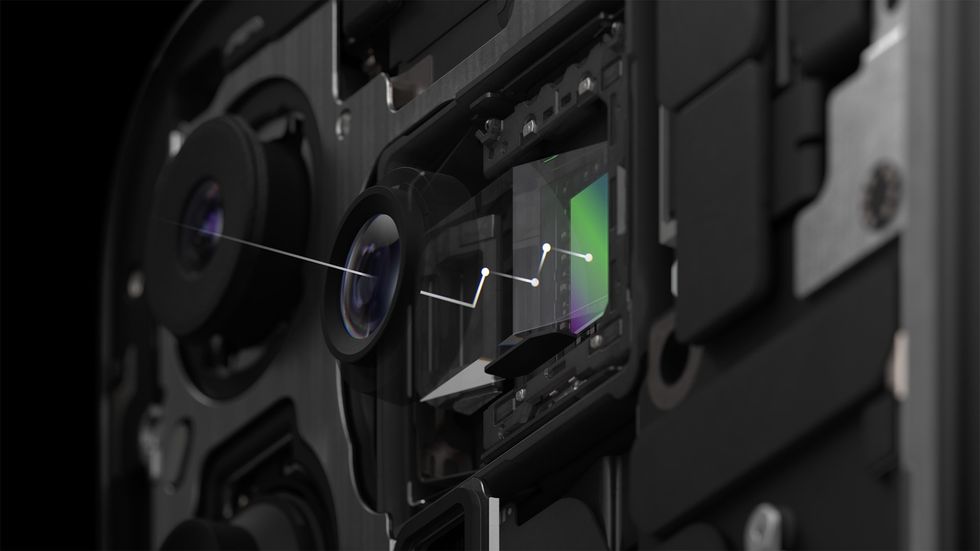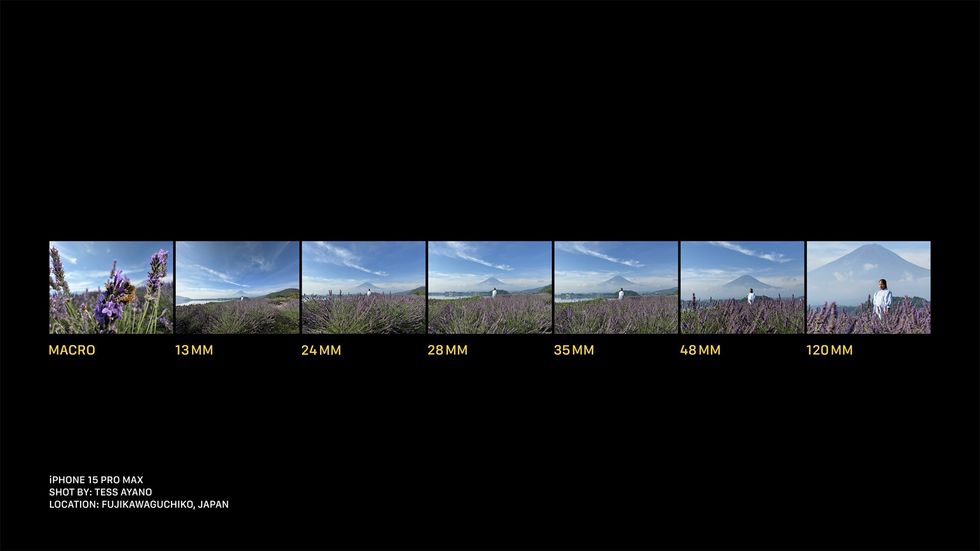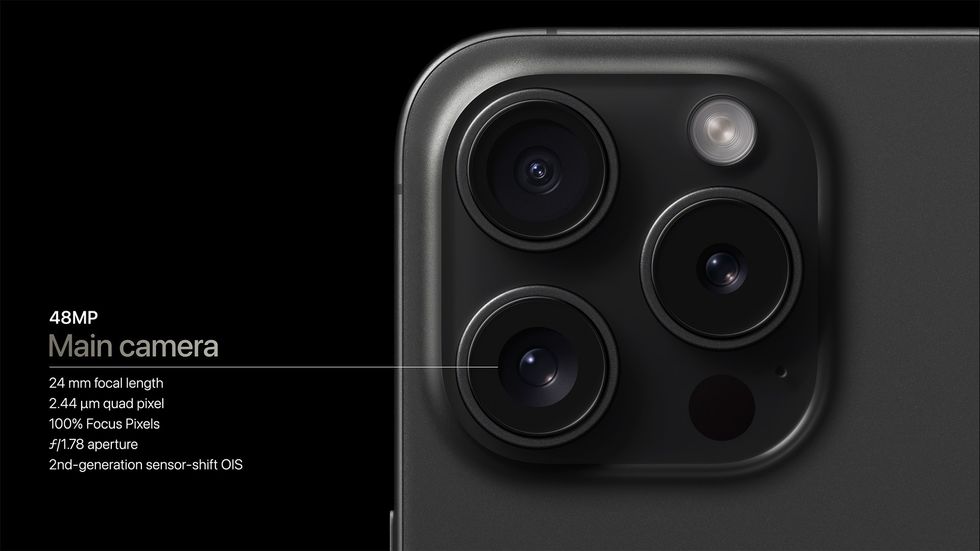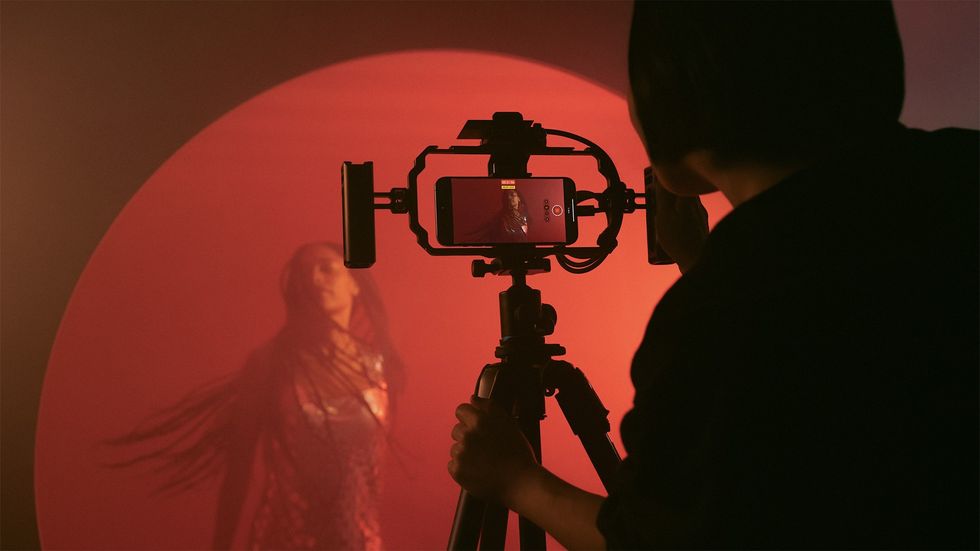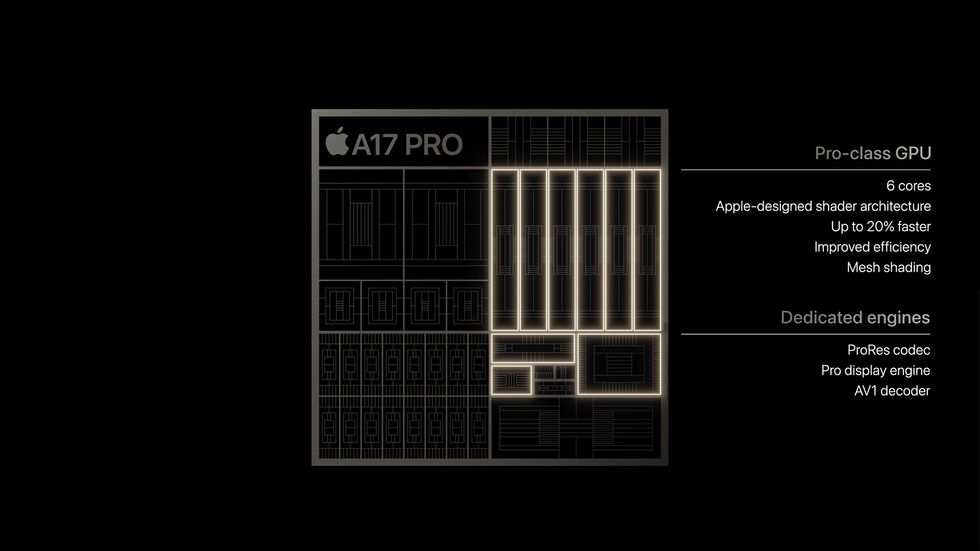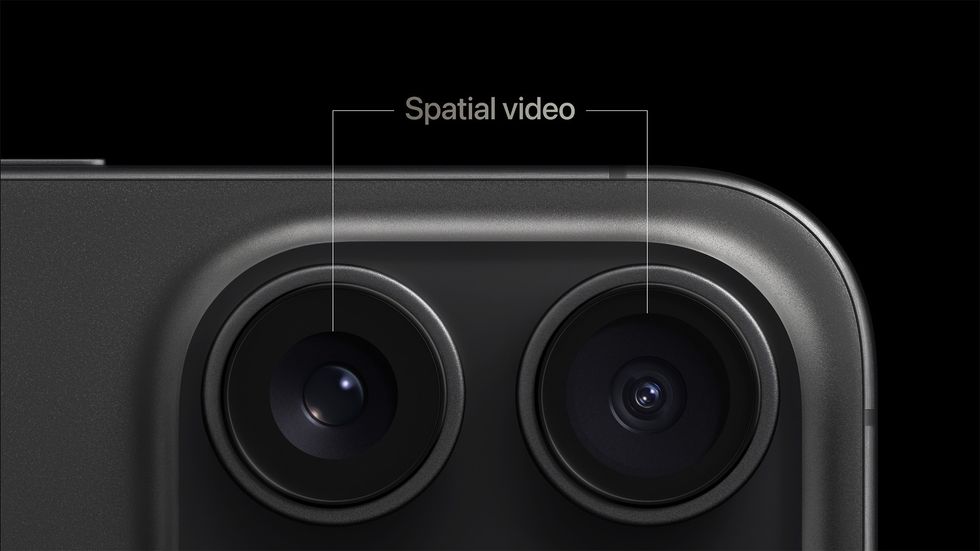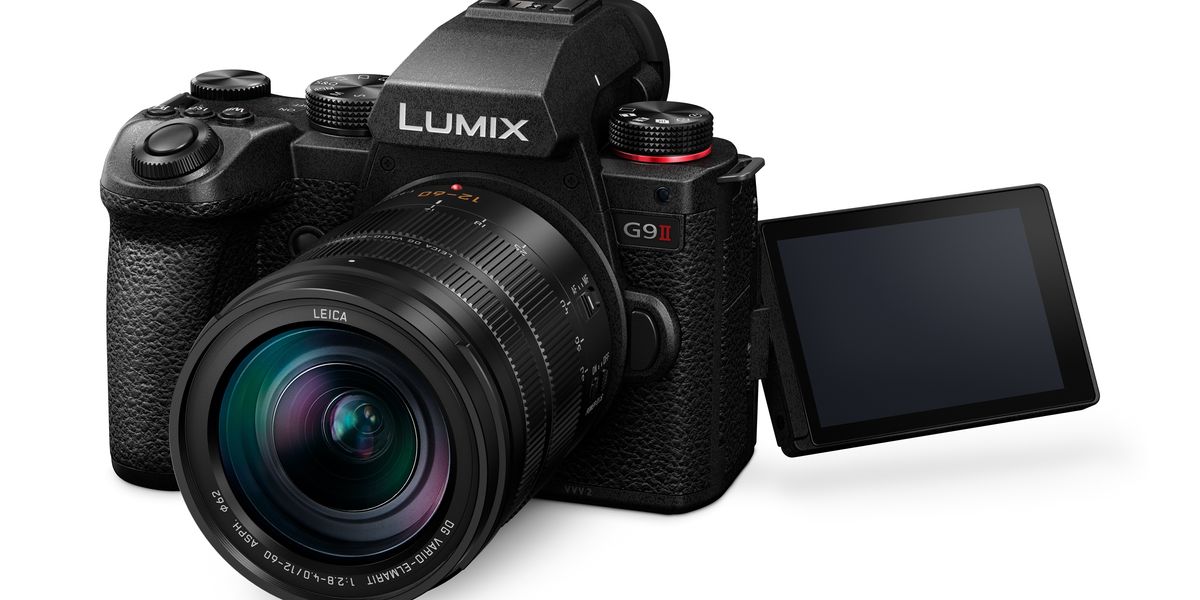
The iPhone 15
Before we dive into the only version that matters, let’s gloss over the other models on offer. The iPhone 15 and iPhone 15 Plus are solid smartphones with subtle upgrades to hardware over the previous generation.
Powered by the A16 Bionic from the previous generation Pro models, the new iPhones pack a 48MP main camera with an optical-quality 2x telephoto feature. From our understanding, this functions kind of like a digital zoom, but due to its high resolution, it can output a solid image that creatives and non-creatives can’t really scoff at.
The iPhone 15’s main camera.
Apple
With a claimed all-day battery life and improved post-processing, users shouldn’t be disappointed in the quality of the product. It’s one of the best phones on the market, not because it has new tech built-in (other companies usually beat Apple to the punch) but because Apple can use its walled garden to refine all the features in one ecosystem.
If you have the budget and want a new one, the iPhone 15 and 15 Plus are great choices for content creators on a budget. It’s not reinventing the wheel at all, but it’s making the experience just a little better.
The iPhone 15 features at a glance.
Apple
The Professional Tool
But what we really want to look at is the iPhone 15 Pro Max. Sure, the smaller iPhone 15 Pro is a solid choice, but it lacks the one addition—a 120mm telephoto focal length.
Initial rumors suggested that Apple would finally include a periscope camera, a hardware feature that allows for an optical zoom mechanism, but that isn’t the case.
Apple created a folded glass structure below the lens, which they call a tetraprism. This reflects the light four times, creating the space within the thin body to allow for a 120mm focal length.
The tetraprism inside the iPhone 15 Pro Max
Apple
So, where is our zoom?
This is where things get interesting. By using the high-resolution images its cameras can produce, the iPhone 15 Pro Max (and 15 Pro) can achieve seven different focal lengths.
This includes a 13mm, a 24mm, 28mm, 35mm, 48mm, and the 120mm. Topping it off, creatives will find a Macro feature that brings the total to seven focal lengths. It’s a whole let of primes, right in your pocket.
All the different focal lengths for the iPhone 15 Pro
Apple
Supporting these features is a new 3D sensor‑shift optical image stabilization and autofocus module that moves in all three directions, which not only improves image stability but also low-light image capture.
iPhone 15 Pro main camera
Apple
But that’s not all. Because Apple has finally added USB-C, creatives will be able to utilize USB 3 to transfer ProRes video to an external drive ProRAW photos to Capture One at 10Gbps. While the previous release of ProRes on iPhone seemed like a gimmick, it’s now a usable production-ready toolset. On a smartphone.
Add in Frame.io via FilMic Pro, and you have a competent tool to tackle more than just Instagram Reels and TikToks.
Shoot ProRes 4K60 to an external SSD or in 30fps internally.
Apple
The A17 Pro
Powering these new updates is a brand-new chip with an upgraded GPU that even supports ray tracing, which is a weird thing to consider since most PC games still struggle to implement the feature.
While it won’t be useful for filmmakers, it’s great for when you want to game during downtime. Add in MetalFX Upscaling and the Neural Engine, and you can a mobile gaming platform.
What is useful for filmmakers though, is how the upgraded chip, its dedicated ProRes engine, AV1 decoder support true production workflow.
The A17 Pro Chip powering the iPhone 15 Pro
Apple
Any video recorded with your iPhone 15 Pro Max will now have ACES color support and Log capture. Add in external storage, and filmmakers can record ProRes video in up to 4K at 60 fps in Log.
Forget the new Action Button that replaces the silence switch. Forget the new design and satellite safety features. The new iPhone has finally become a filmmaking tool we can rely on.
But funnily enough, that’s not the weirdest filmmaking thing to debut.
An iPhone 3D Camera
When the Apple Vision Pro was announced, it was met with awe and skepticism. While the final product has yet to get a release date, Apple’s Spatial Video feature was an interesting addition to its line of products. However, the only way to record Spatial Video, which is Apple’s term for 3D, was to use the cameras on the Vision Pro.
Well, not anymore. The iPhone 15 Pro can use two of its cameras instead. Correct me if I’m wrong, but the iPhone is now a 3D camera, right?
An iPhone that can shoot 3D video. But how can we use it beyond the Vision Pro?
Apple
We have yet to hear how this feature will be implemented into the Visio Pro, but I am more than certain that tech-savvy filmmakers will be able to utilize this feature to tap into the 3D world once again.
How? I’m not sure, but I’ve seen folks use the LiDar tools on the iPhone to create some amazing photogrammetry. I’ve also seen creative use the accelerometers to create camera tracking tools. Now, filmmakers will have the Spatial Camera to work with, and I can’t wait to see what people come up with.
Is This Filmmaking Tool For You?
The iPhone 15 Pro and iPhone 15 Pro Max will retail at the same price as the previous generation. From $999 for 128GB for the Pro and $1199 for 256GB for the Max. It’s a costly tool when you can get dedicated cinema cameras for the same price on the used market, but it’s an attractive tool for creatives who already carry an iPhone with them.
The iPhone 15 Pro and Pro Max features at glance.
Apple
If you only plan on getting this iPhone to shoot your next film, maybe it’s not the right purchase, but if you’re in the market for an upgrade, and you’re a creative, it’s a no-brainer.
You’re getting loads of features that we’ve always wanted, and some we never knew we needed. For me, I’ll be finally upgrading my 14 Pro Max and I can’t wait to see how this tool supports my creative journey. And I can even use it to call my mom.








